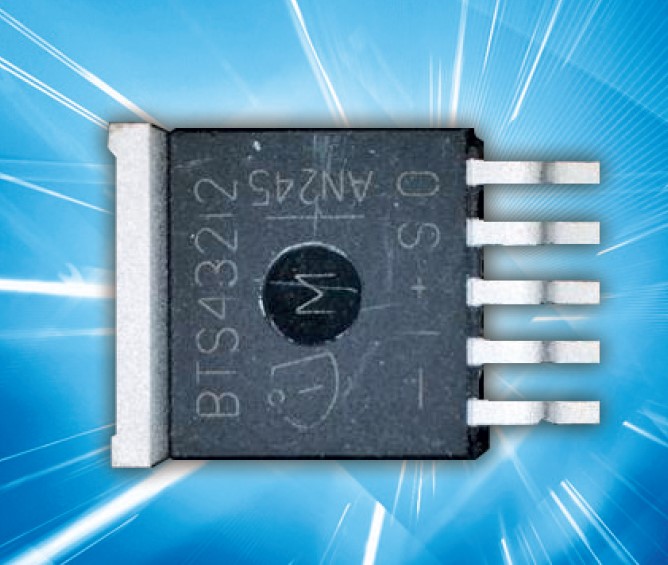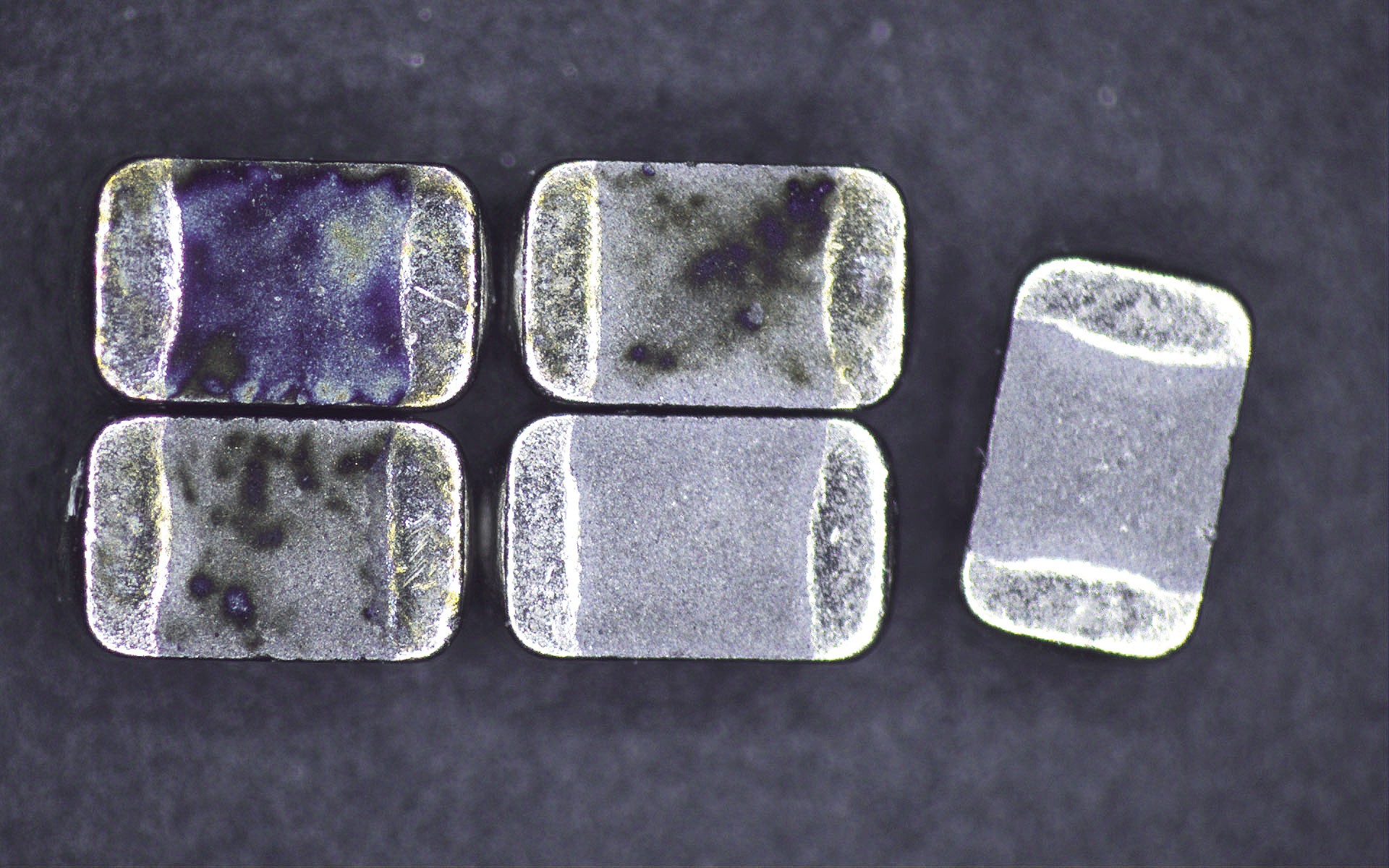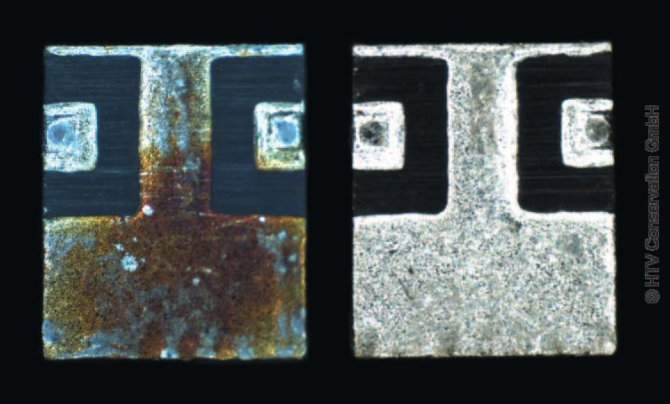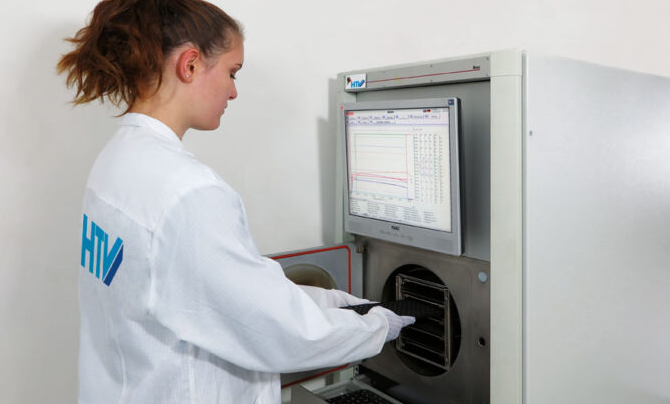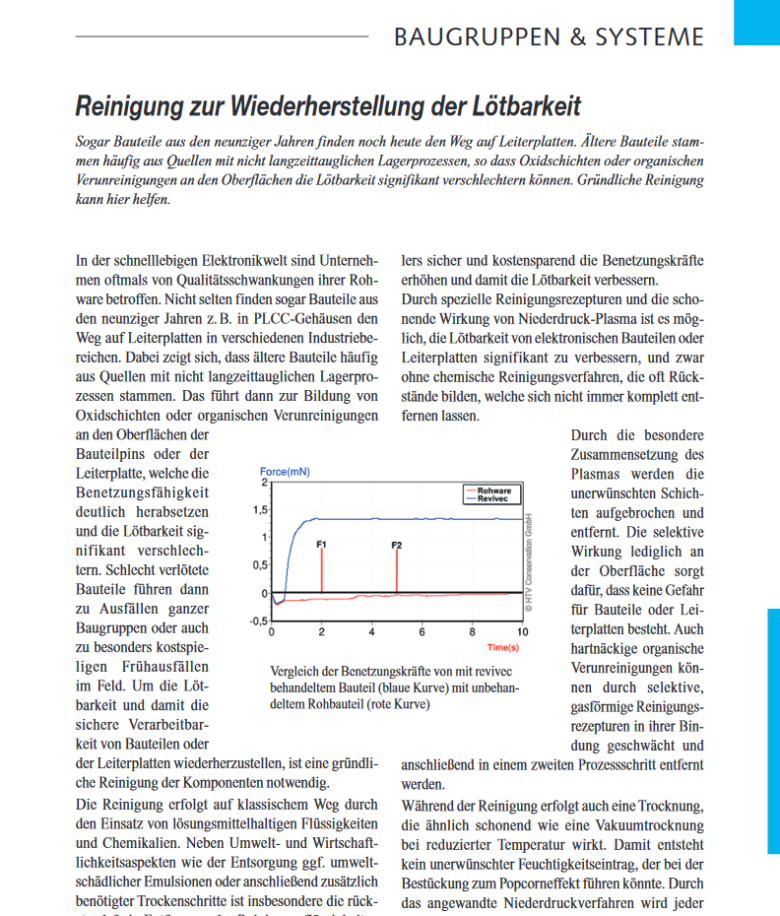Cleaning and reconditioning/refurbishing of electronic components to restore their solderability
Available procedures:
- HTV-revivec®:
- Removal of inorganic and organic impurities
- Cleaning and reconditioning of oxidized or corroded surfaces
- HTV-NovaTIN®
- Restoring component solderability via dip tinning
- Refurbishing of already de-soldered components
- HTV-NovaTIN®–PLUS
- Removing diffused surfaces, including selective removal of intermetallic phases with subsequent retinning
- Realloying components from leaded to lead-free (RoHS directive) and vice versa
Removal of oxidation and impurities
Using the HTV-revivec® cleaning and reconditioning process, the solderability of, for example, oxidized component pins can be restored by completely removing organic and inorganic effects, such as oxide layers, corrosive surfaces and other impurities.
The reconditioning process is tailored specifically to the material’s composition as well as the kind and grade of impurity. Cleaning other components, such as printed circuit boards, lead frames or mechanical components may also be implemented by adjusting the process to any respective requirements.
The revivec® method is especially suited to clean components with a thick tin layer showing surface oxidation.
However, if the copper from the inside of the component pin has diffused into the tin on the pin’s surface (also known as intermetallic phase), it is necessary to apply the HTV retinning process, i.e. HTV-NovaTIN®-PLUS.
HTV NovaTIN®-PLUS: Specialized retinning of electronic components
The specialized HTV NovaTIN®-PLUS procedure is based on a complete and precise removal of the entire tin layer and a subsequent refurbishing of a stable, solderable and lead-free layer of pure tin.
Unlike the conventional HTV NovaTIN® (retinning) this method additionally removes the intermetallic phase between the base material and the tin layer, followed by the application of a new and unleaded layer of pure tin. This ensures a surface coating with high mechanical stability.
Especially older components, which have already suffered a strong diffusion, pose at best a high difficulty or at worst inhibit the production of reliable solder joints. This is what makes this unique method so extraordinarily important.
Even already de-soldered components can be re-used again without any issues, thanks to the new pure tin layer produced by NovaTIN®-PLUS (refurbishing).
In order to meet the requirements of the RoHS directive it is often necessary to realloy components from leaded to lead-free. The HTV NovaTIN®-PLUS method provides a solution here as well: the component’s original and leaded tin surface is removed completely and replaced by a new, RoHS-compliant layer of pure tin.
While more and more industrial branches are relying on RoHs approved components, both the aerospatial and the arms industry still make use of leaded components. One process known as hot solder dipping is a way to outfit commercial lead-free components with a tin-lead (SnPb) surface.
HTV NovaTIN®-PLUS is especially useful for components which already have experienced a diffusion of the copper inside the component pin with the tin on the pin’s surface (intermetallic phase).
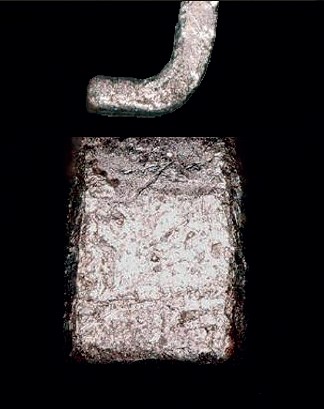
upon delivery
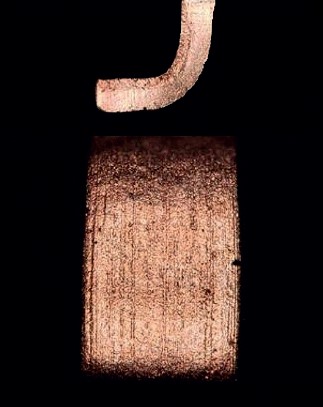
including the intermetallic phase
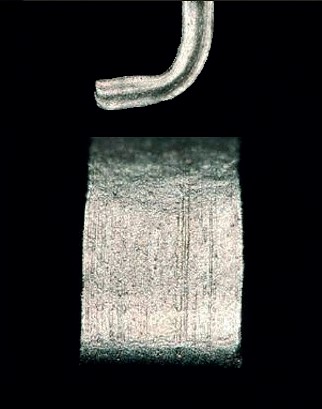
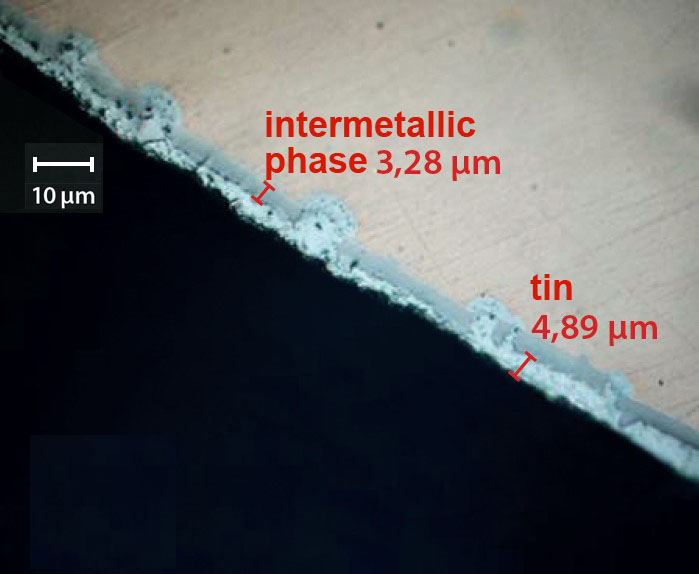
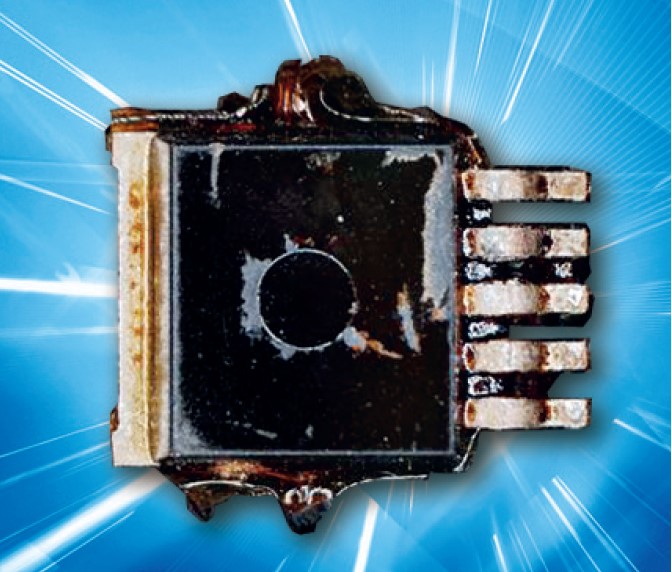
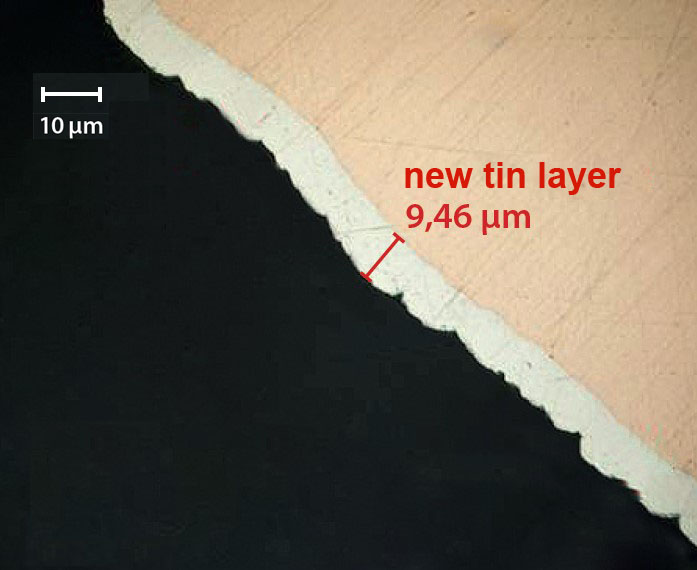
HTV NovaTIN®-PLUS; note the fine-grained and homogeneous new tin layer almost without intermetallic phase
